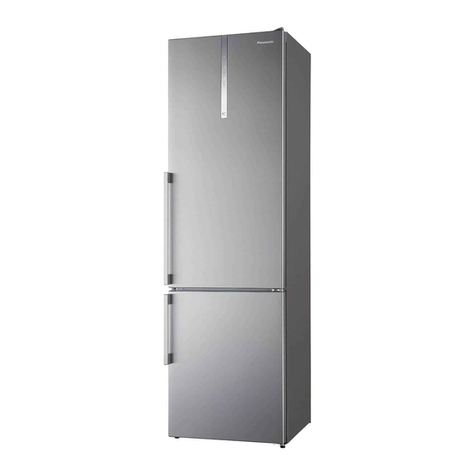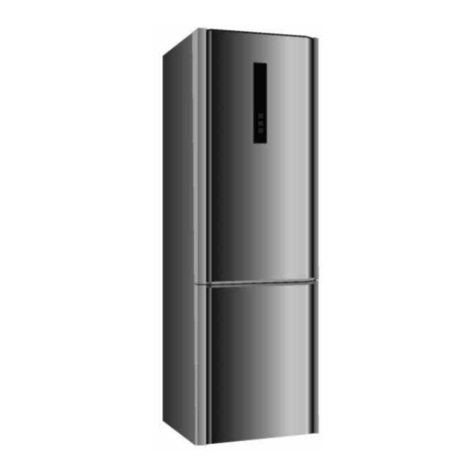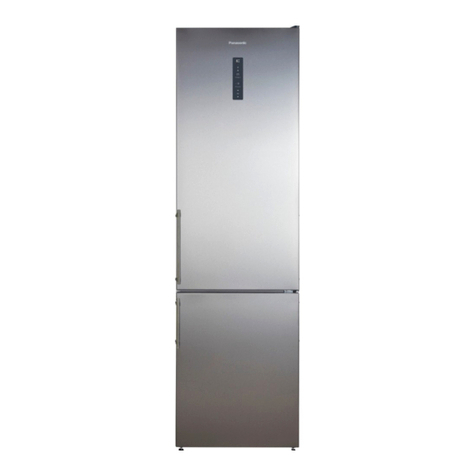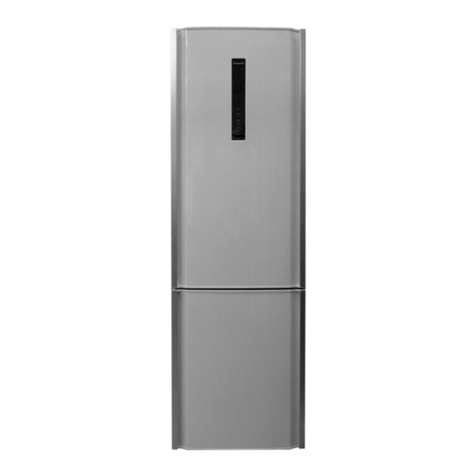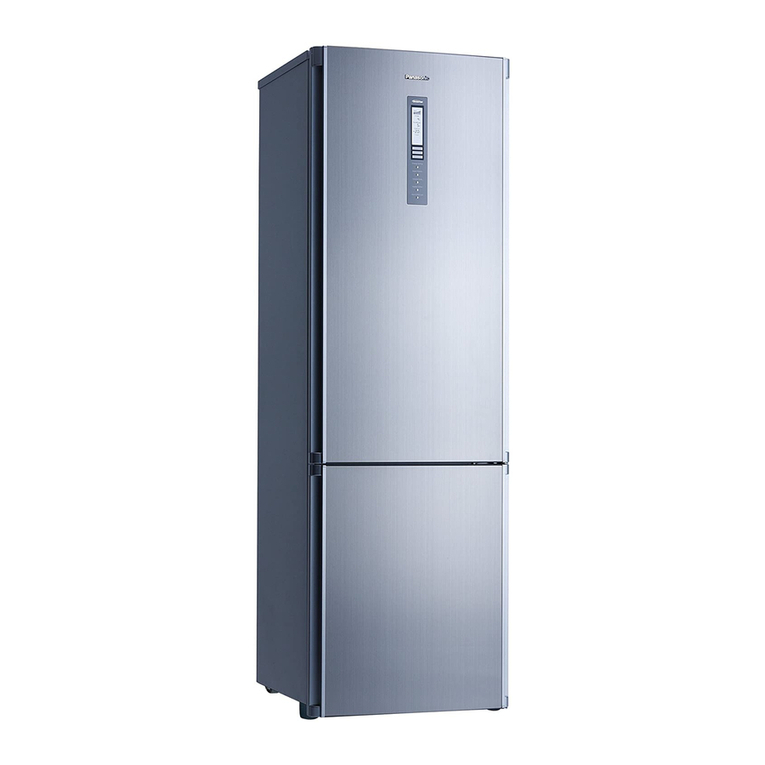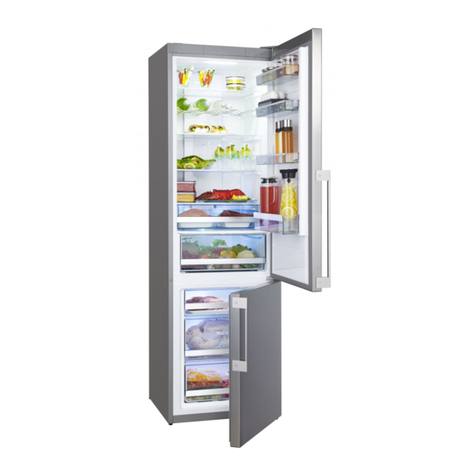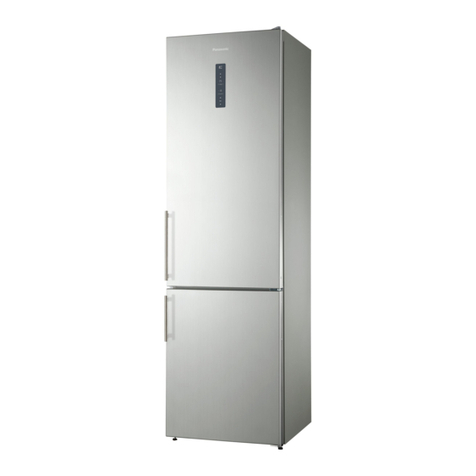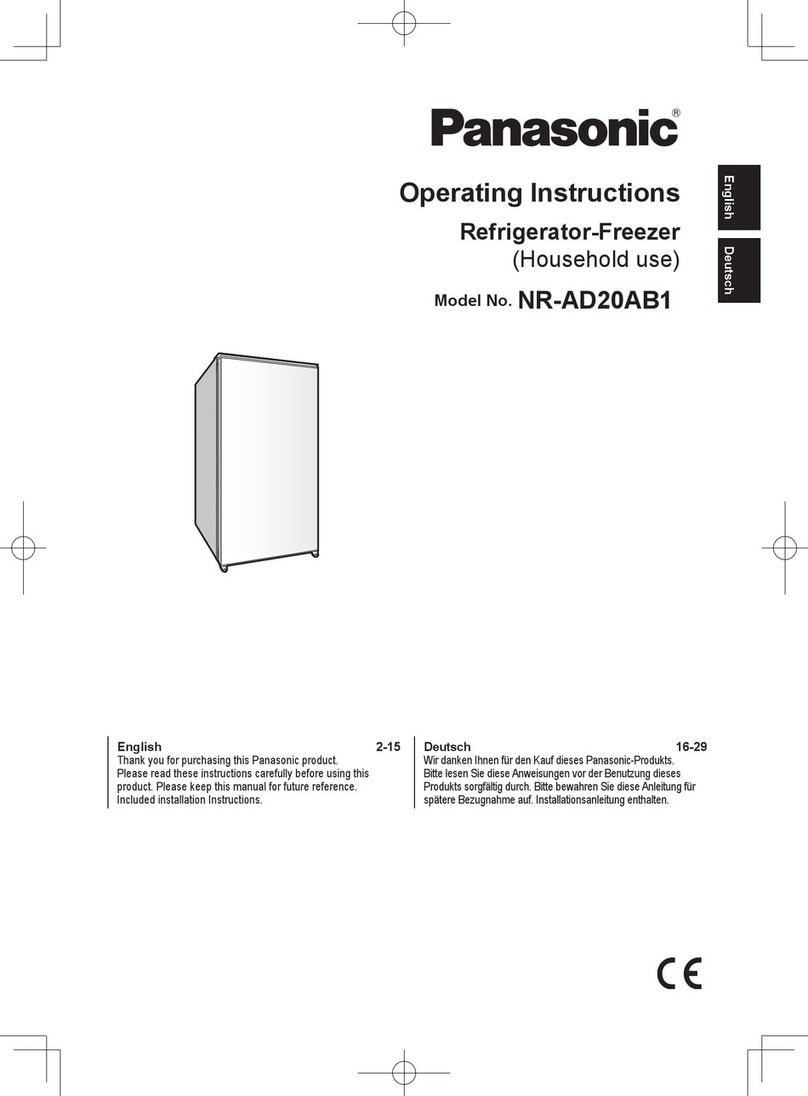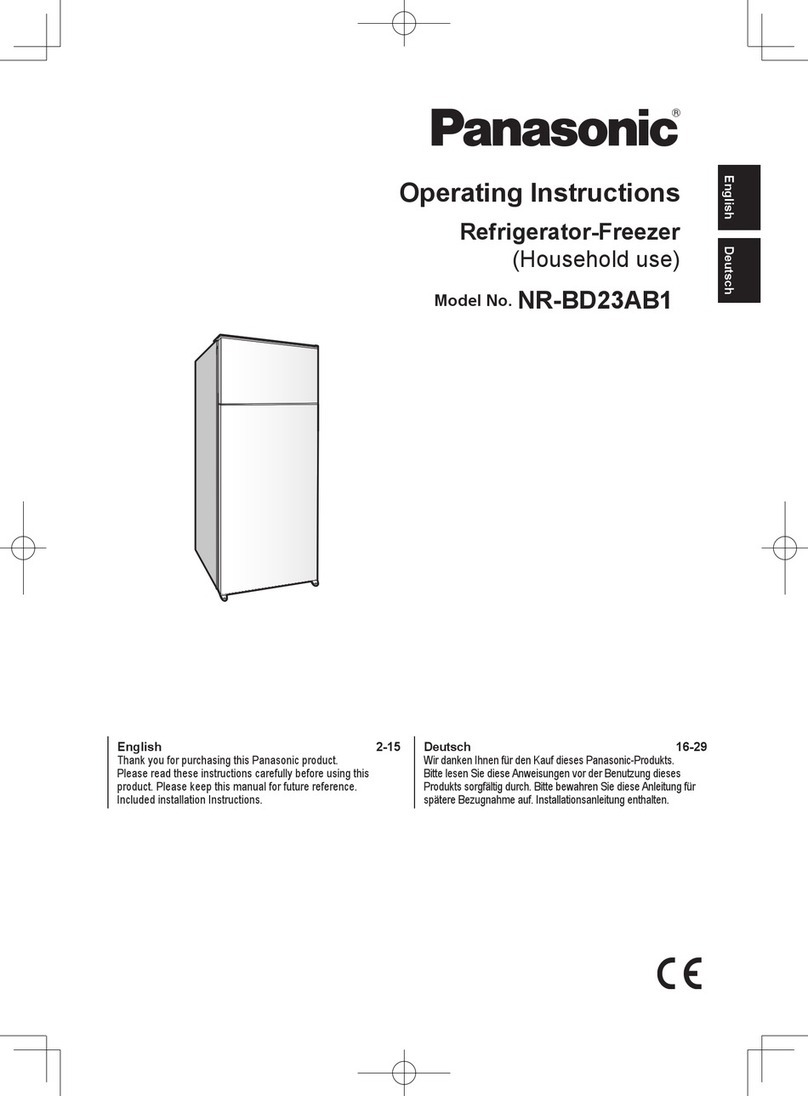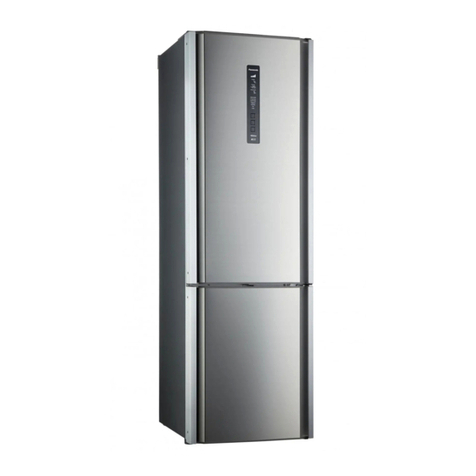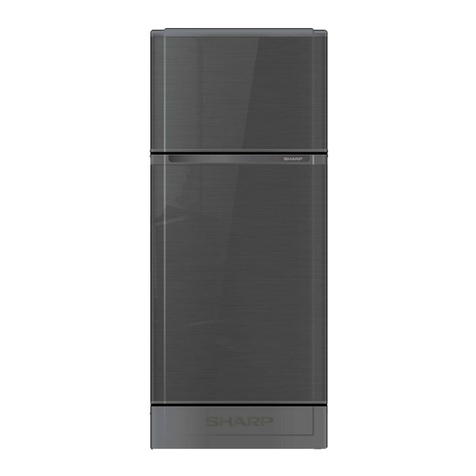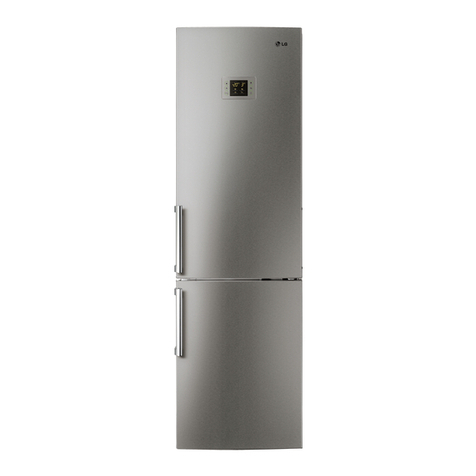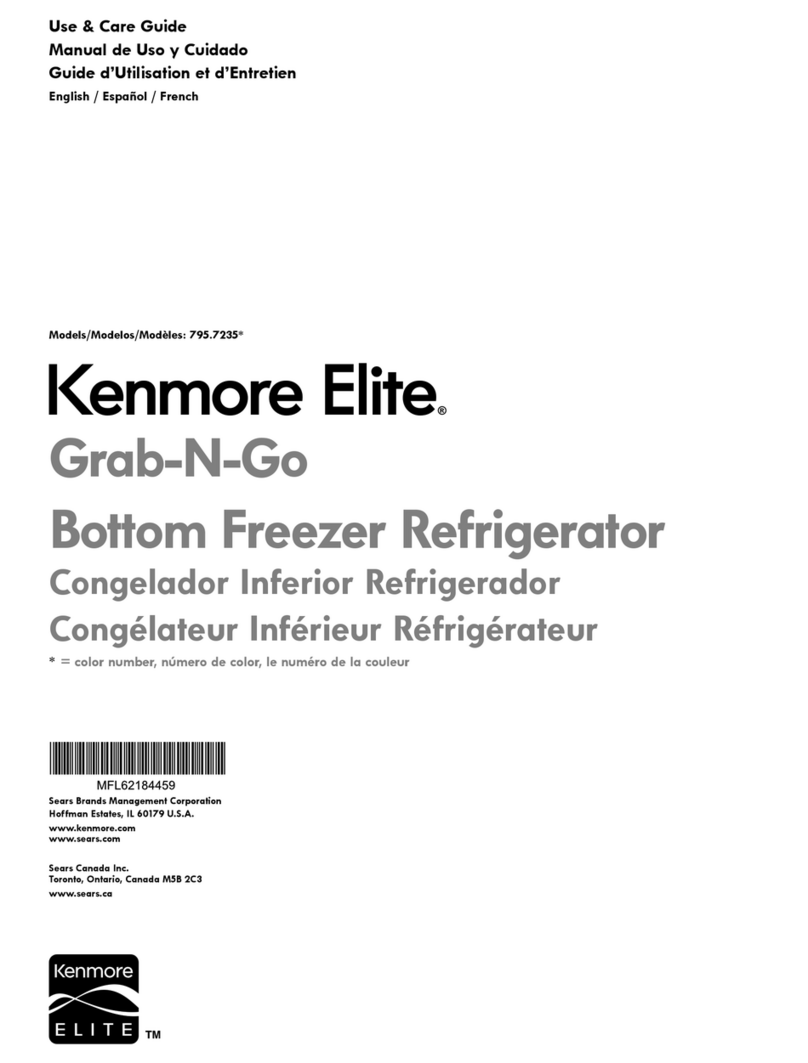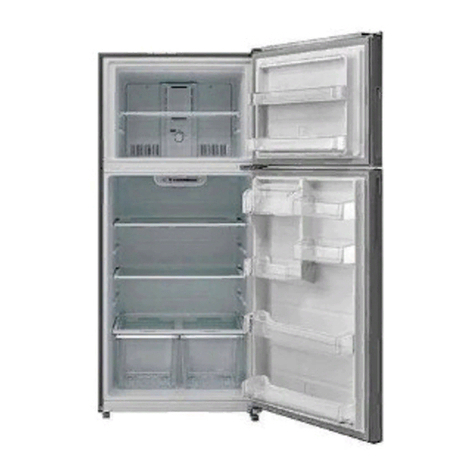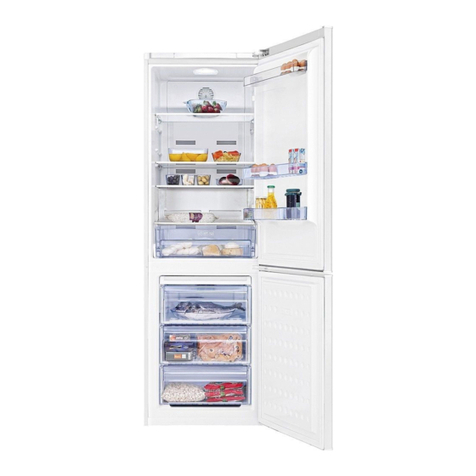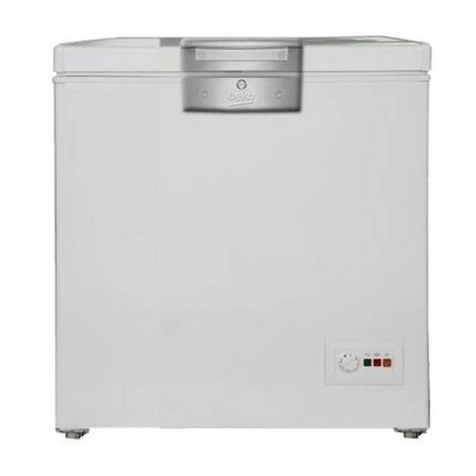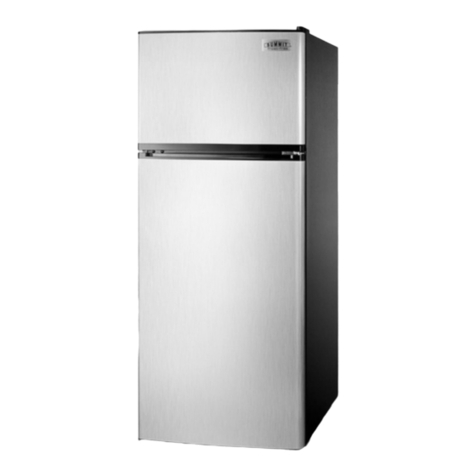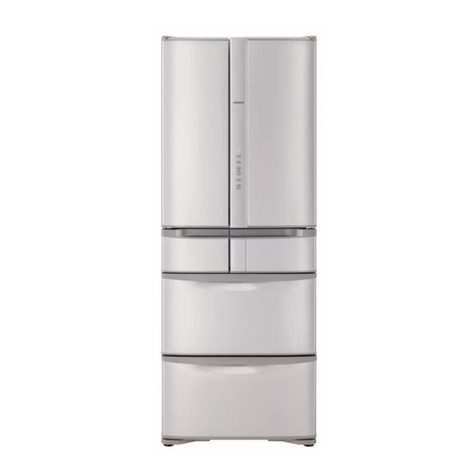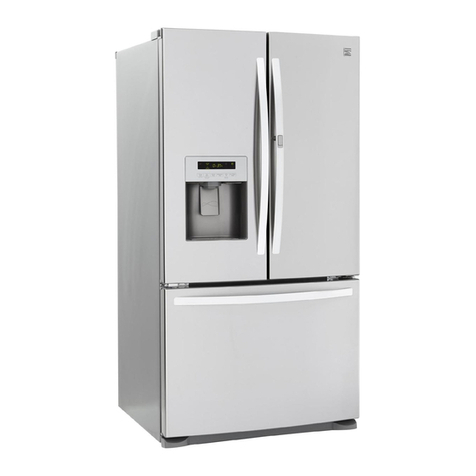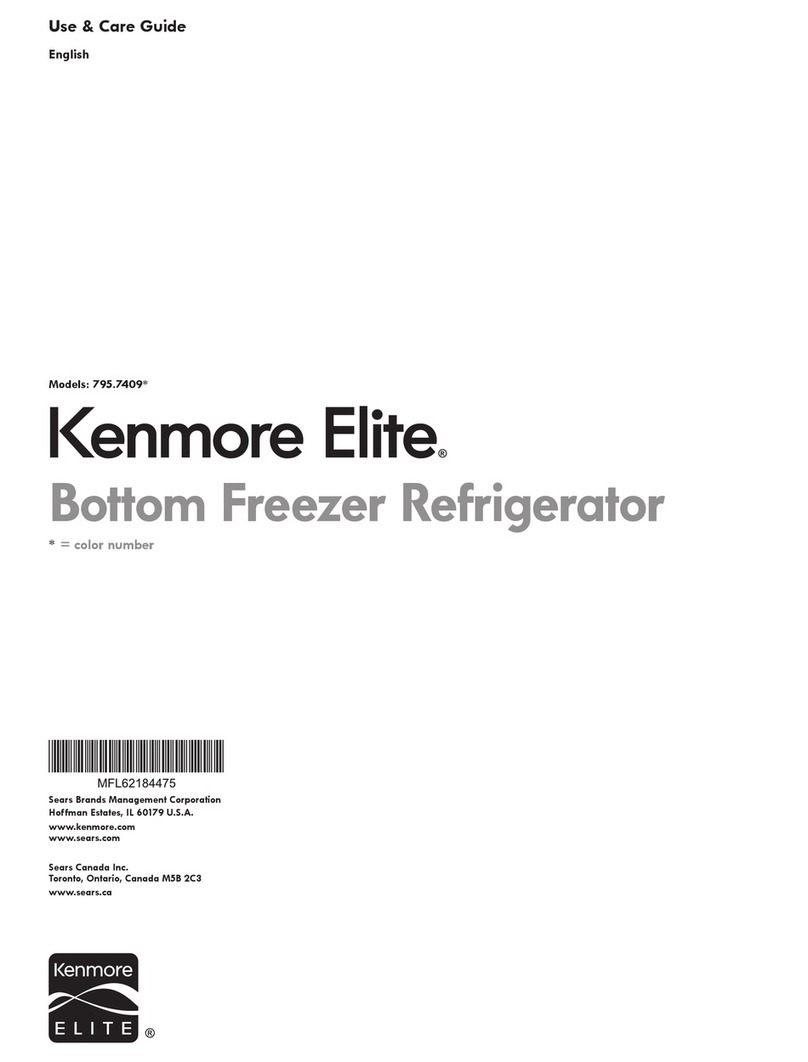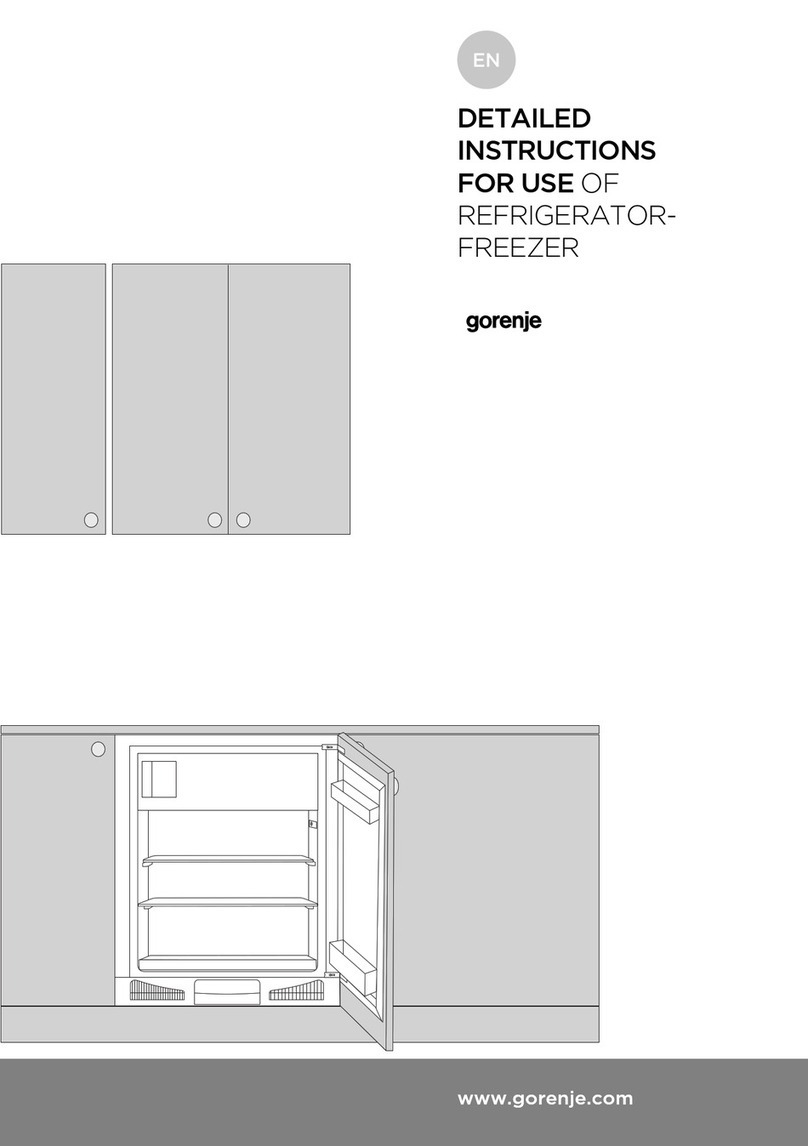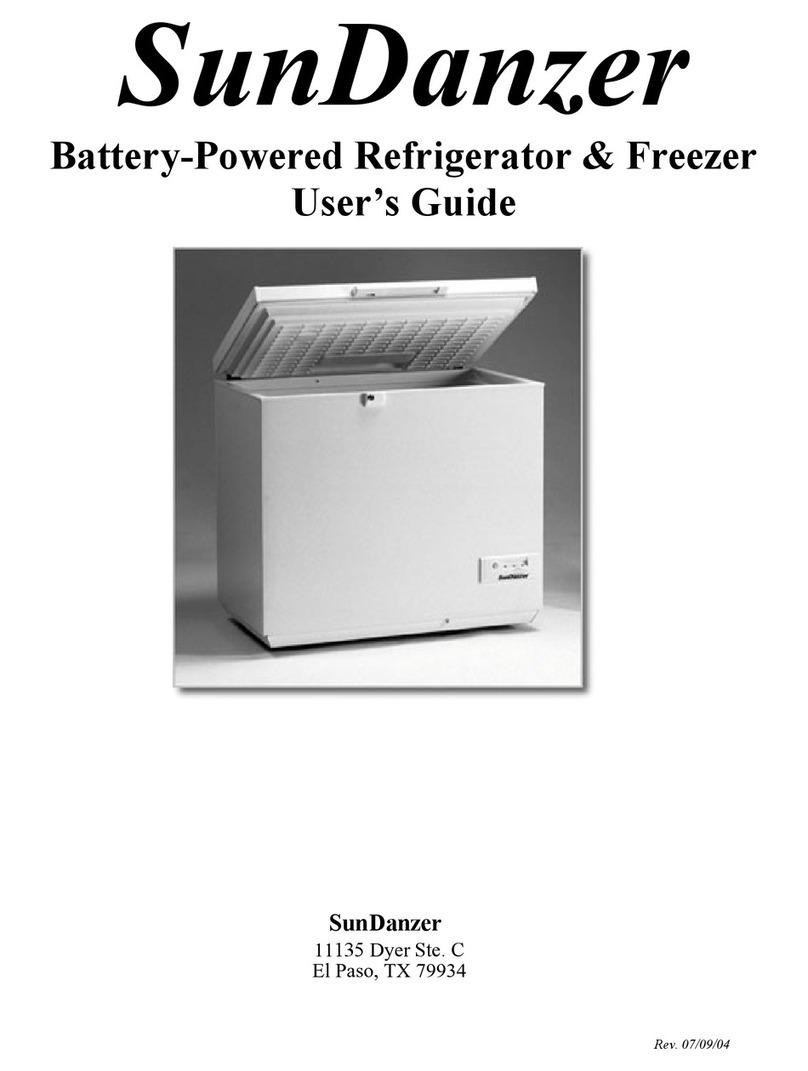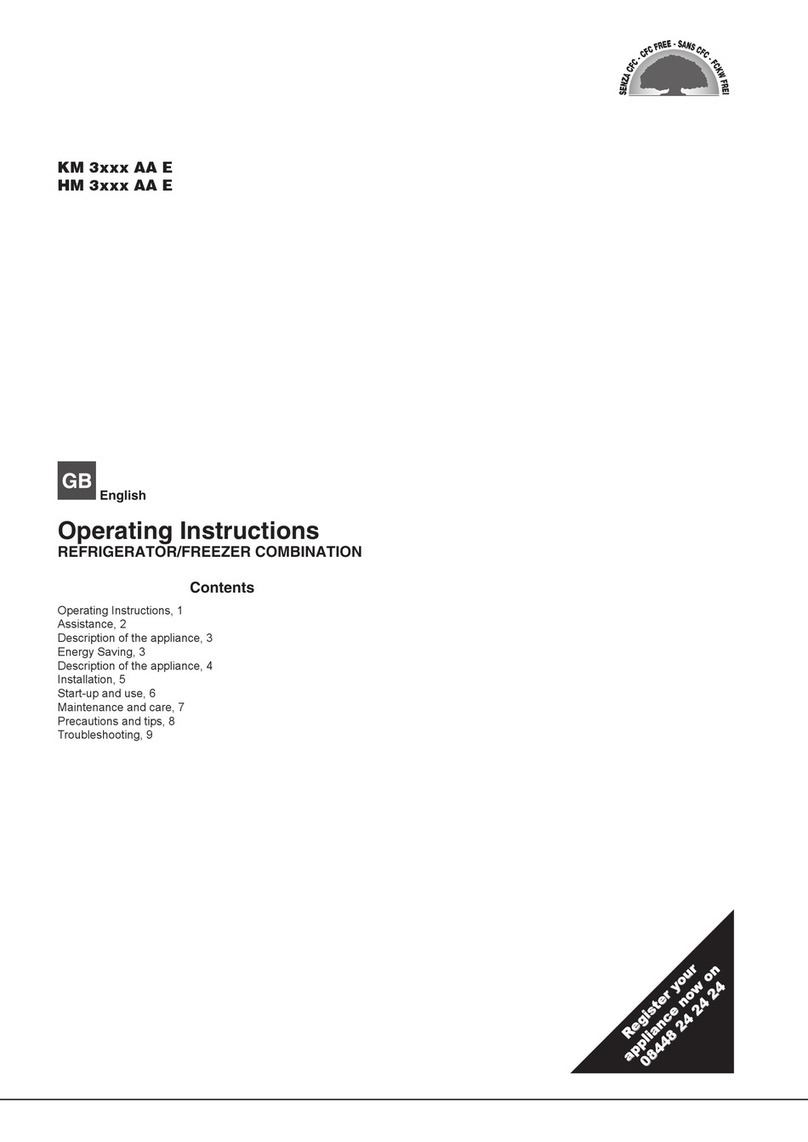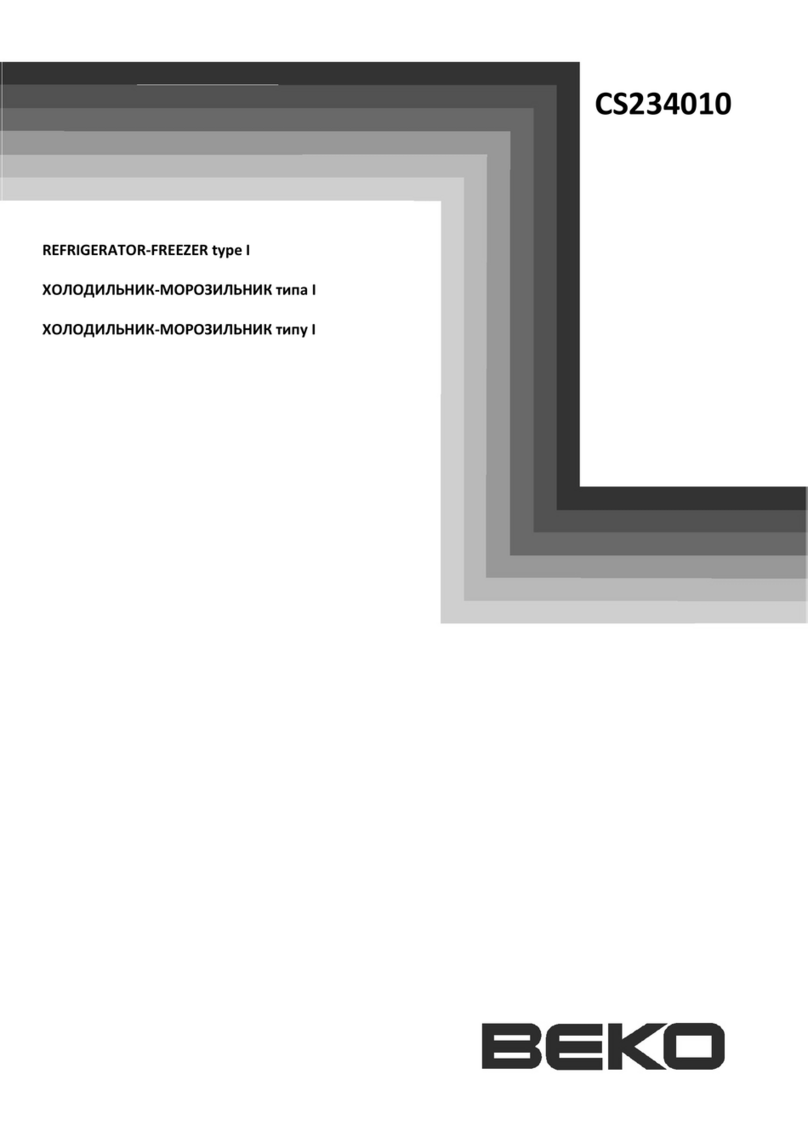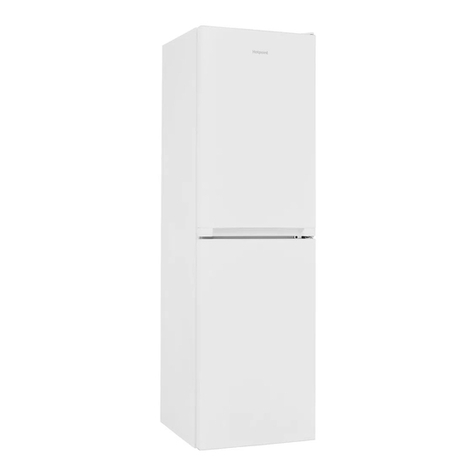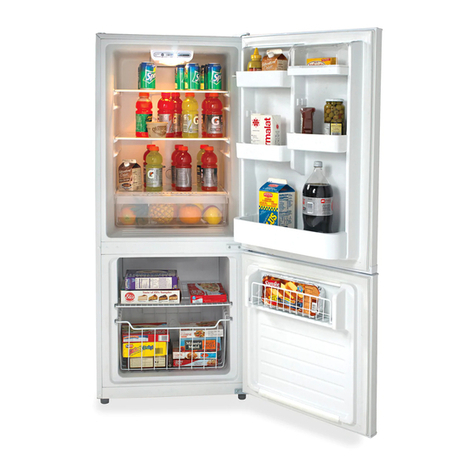
44
Remove any dirt or dust from the mains plug’s pins before connecting to the power supply.
• Dust build-up on the mains plug can cause insulation failure, especially in humid conditions. This can cause short
circuit, re or electric shock. Unplug the mains lead and wipe it with a dry cloth. Never use a wet or damp cloth.
Plug your appliance into the socket, making sure the connection is secure.
• A loosely connected mains plug can cause re or electric shock.
Install the refrigerator in a well-ventilated area.
• The more refrigerant there is in an appliance, the larger the room it should be installed in. If there’s a refrigerant uid
leak, and the appliance is in a small room, the build up of combustible gases is more likely. This can cause re or
explosion. As a guide, for every 8 g of coolant, you’ll need at least 1 cubic metre of space in the room. The data plate
inside the appliance tells you how much refrigerant your refrigerator contains.
The refrigerant (R600a) used in the refrigerator and the gases in the insulation material (cyclopentane) are both
ammable. They also require special disposal procedures.
• Before you dispose of the appliance, make sure none of the pipes on the back are damaged. Refrigerant or gas leaks
can cause re or explosion.
Unplug the refrigerator before cleaning and servicing.
• Failure to do this can cause electric shock.
If you smell burning or see smoke coming from the refrigerator, disconnect the power immediately and please
consult authorized service centre.
• Failure to do this can cause re or electric shock.
-WARNING:
Keep ventilation openings, in the appliance enclosure
or in the built-in structure, clear of obstruction.
• Failure to do this could result in re or explosion because
refrigerant cannot disperse if it leaks.
CAUTION Indicates risk of injury or damage to property.
Do not put glass bottles or containers in the freezer.
• When the contents freeze, the glass may break and cause injury.
Do not touch the inside walls of the freezer or items stored in the freezer with wet hands.
• Your skin can become frozen onto the interior wall, or items stored in the freezer.
If there’s a power cut, avoid opening the refrigerator frequently or putting unchilled
food in it.
• This can cause the temperature in the refrigerator to rise and adversely affect sanitation.
Also, be careful of the gap between the fridge and freezer doors, especially if they are
both open at the same time.
• This may cause personal injury.
When opening the refrigerator, be careful not to pinch your ngers at the “pinch point”
areas. In particular, when opening the fridge door, be careful to avoid the potential
pinch point between the fridge and freezer doors.
• This can cause personal injury.
Potential pinch point
Safety instructions (continued)
